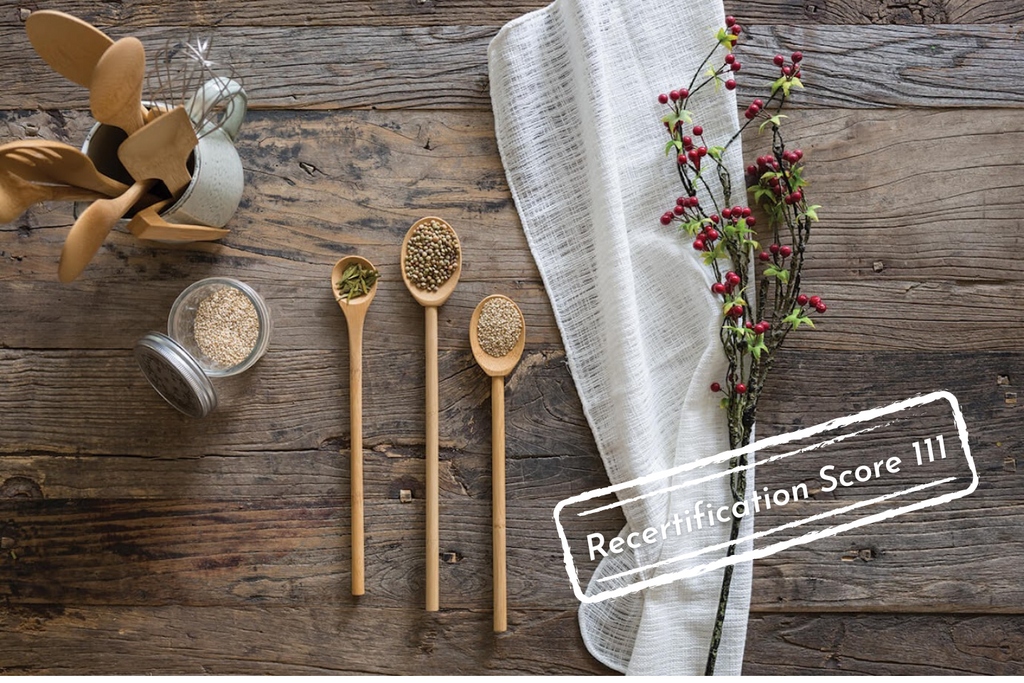Between online ads filling your computer screen, emails crowding your inbox, and now social media at our fingertips, the push to *buy more* has perhaps never been greater. What’s an eco-minded person trying to lessen their footprint to do? Unless you’re living totally off the grid, the reality is that you’re going to have to make some purchases. By incorporating conscious consumerism into your life, you can start spending wisely (and use your purchases to make a difference).
What is conscious consumerism?
You’ve probably heard of consumerism before (and what you’ve heard might not have been positive). Our society's focus on creating demand for more and more products isn’t just bad for our wallets, it’s harmful to the environment. Every year, more goods are being produced, typically with detrimental effects on the planet. And more goods than ever before are being thrown away. In 2018, 11.3 million tons of waste was tossed in landfills from clothes alone. To compare, that number was less than 2,000 in the 1960s. While the population has more than doubled in that time, the ammount of waste we produce has increased at a far greater rate.
While you may understand that this level of consumerism is unsustainable, what you do about it is harder to determine. You still need, at the least, the essentials to continue everyday life. So how do you consume what you need without doing excess harm to the environment and those that live on it? Much like switching to alternative dairy-free milk to reduce the environmental impact of your diet, there are options out there that offer the same benefits, but a more eco-friendly outcome.

Conscious consumerism is, simply put, having an increased awareness of what you buy, and shifting your purchasing behavior as a result. From how it was made to what will happen when you’re done with it, conscious consumerism means asking more questions before making a purchase. Consumerism wants you to buy for the sake of buying. Conscious consumerism challenges you to think about the impact of what you’re buying. And it’s a trend that’s creating big changes in how companies do business. Don’t believe those big companies care about your dollar? Keep reading.
The power of your purchase
You may feel like your monthly purchases are but a small drop in the bucket for big corporations. But those add up to an ocean. And you’re not the only one who wants to make their money count for the better. According to recent research, 73% of global consumers would change their consumption habits to reduce their impact on the environment. That’s a lot of purchasing power. Businesses are listening. In 2011, only 20% of the major S&P 500 companies reported on their sustainability efforts. Now? That number was up to 90% in 2019, only eight years later. More than just paperwork, consumer pushback has created serious changes in how businesses operate. Since 2001, SeaWorld stopped its Orca breeding program, international clothing brands such as Zara have eliminated fur from their thousands of stores, and even places like Staples have pledged to introduce more recycled content into their products. All because consumers made noise with how they spent their money. And research is showing that conscious consumerism is not just a quick trend. It’s estimated that by the end of 2021, $150 billion will be spent on sustainable goods in the US alone. Every time you make a purchase, you’re voting with your wallet. And as you can see, what you choose to do with your vote really counts.How to be a Conscious Consumer
5 tips for conscious consumerism
Sticking to your values with every purchase can be hard to do. Especially thanks to “greenwashing,” where brands advertise themselves as being eco-friendly without really doing the work. Yes, it makes us mad too. Cut through the confusing marketing tactics by using these five tips to focus on conscious consumerism when you’re getting the urge to make a purchase.
1: Think before you buy
The easiest way to curb consumerism is to buy less. So the next time you’re considering an impulse purchase, take a minute to think it through. Do you really need the item? What’s the purpose? Do you need it this second, or could you take the time to search for a more sustainable alternative?

2: Ask what the product is made of
While you’re shopping around, dive into the materials that make up what you want or need to purchase. Products made from non-renewable materials, such as petreoleum-based items, take much greater toll on the environment through their entire life cycle. The extraction and production process harms both the planet and the people involved, and once they’re made, items created from non-renewable resources (think plastic cookware or synthetic fabrics) are difficult to dispose of. Instead, can you find a similar item made from renewable and natural materials, like bamboo or hemp? Naturally renewable and organic materials don’t use harmful pesticides or chemicals, and they’ll continue to be available for years and years to come. And when it comes time to dispose of natural materials like bamboo, they’ll biodegrade on their own. Choosing items made with sustainable materials is one of the largest factors in creating and consuming consciously.
3: Look for quality over quantity
When it’s time to buy something new, look beyond the price tag. While many of us have grown up in a society where more is better, consider purchasing one high-quality item that will last for years rather than several items that might not make it through the month. If the higher cost of quality items is hard to swallow, consider how much you might spend replacing the lower-quality item every several months. While quality may cost more upfront, it pays off in the long run (and keeps more trash out of our landfills).
4: Research, research, research
Remember greenwashing? Avoid getting sold on something that’s only masking unsustainable practices in “eco-friendly” packaging by taking a deeper look at the companies you buy from. Look out for certifications that prove their claims are valid. Certified Organic, Biobased, and Biodegradable or Compostable are some good examples of what to look out for. If a company doesn’t disclose information about its supply chain or production process, you may want to search elsewhere. Much environmental damage from consumerism relates to the materials and processes used to create products. Doing some digging should quickly reveal if the company is supporting the goals of conscious consumerism in its practices. Want to support businesses that are as socially responsible as they are environmentally conscious? Look for the B Corp symbol on product labels. B Corps are held to high standards in all aspects of their businesses and are a great way to know that a company is putting in the work.
5: Repurpose and consider the product’s end of life
Your impact doesn’t end when the products you buy are no longer useful to you. This is where your product's end of life comes in. What will happen when you want to dispose of it? Is it compostable or recyclable? Can you donate it rather than tossing it in the trash? Keep in mind that once something is made, there is no “away,” meaning your purchases won’t dissolve at the end of their life- that is- unless they’re compostable or biodegradable. If possible, look for products that can either decompose, be recycled or be repurposed without losing much value after their initial lifetime is over. Asking, “is this product designed for deconstruction?” can help you determine it’s end of life. If something can be disassembled, taken apart, or recycled, it’s likely that the products end of life was considered in its creation. Alternatively, can you find a new use for your item rather than tossing it in the trash? Extending the life of your items by repurposing them for a different use might even save you from buying something new (or help you create a gift for someone else).
If you’re looking at your current purchasing habits and feeling overwhelmed, consider taking small steps to start shifting towards a lifestyle of conscious consumerism. Can you pick one area of your life to start with (we’d suggest the kitchen)? In what ways can you extend the life of what you already have? If you have bamboo or wooden cookware, use a quality finishing oil to bring older pieces back to life. If you’re looking for something new, focus on products that are created with a sustainable supply chain of natural, renewable materials that are biodegradable. What about making a rule to wait one day before purchasing something you want? Breaking down the habits of constant consumption may be hard but using your purchases to create the change you want in the world is well worth it!
The steps of conscious consumerism start with your everyday purchases If you need new kitchen items, consider products that tread lightly on the environment from creation to end of life.
Shop Certified Organic, Biobased, and Compostable bamboo kitchenware here.
How are you taking steps to be a more conscious consumer?





